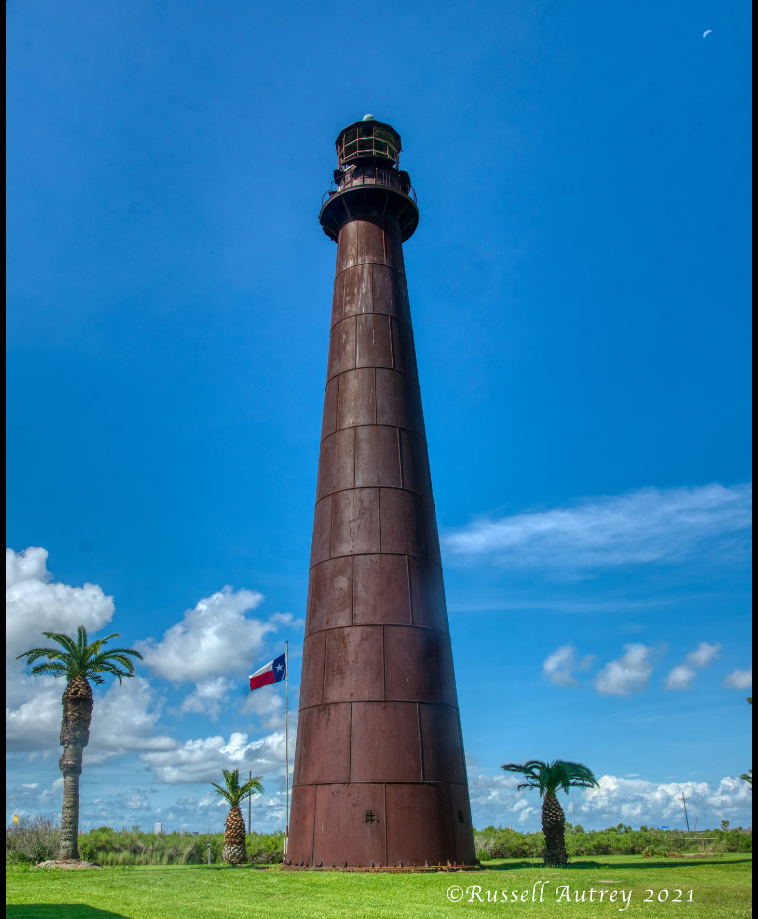Bolivar Point Lighthouse
Built in 1872, the Bolivar Point lighthouse was commissioned by the United States Congress to guide ships through Galveston Bay, remaining in operation until 1933. The lighthouse facilitated maritime commerce, impacting the growth of cities such as Galveston, Texas City and Houston. During the Galveston Hurricane of 1900, Bolivar Point Lighthouse served as a shelter for 125 people who survived the storm by huddling inside the tower.
The Bolivar Point Lighthouse is one of the few 19th-century lighthouses remaining on the Gulf Coast, and one of only two remaining iron lighthouses in Texas. Additionally, Bolivar Point is the tallest historic lighthouse in Texas, and its third-order Fresnel lens is on display at Smithsonian’s National Museum of American History in Washington, D.C. In 2015, the Bolivar Point Lighthouse Foundation was established to oversee fundraising and management of the privately-owned Lighthouse’s restoration.
The Bolivar Point Lighthouse is currently in a state of deterioration. After decades of hurricanes and storms, the structure’s lantern and iron shell has become a hazard. Severe weather conditions have eroded masonry and steel elements of the lighthouse, which has rusted to a dark brown. The lighthouse has several missing members which have continually fallen off over the years.
Greater awareness of the Bolivar Point Lighthouse restoration project will build fundraising momentum and enthusiasm for the site’s future preservation and interpretation. Public access planned for the site will ensure that the maritime history associated with one of our state’s most important coastal landmarks will be understood and appreciated by all who visit.
For more information visit https://www.bolivarpointlighthouse.org/
ADDRESS: 419 Everett Road, Port Bolivar (Galveston County)
DESIGNATION: NRHP
STATUS: Endangered
OWNER: Bolivar Point Lighthouse Foundation
RESOURCE TYPE: Maritime
YEAR LISTED: 2022


